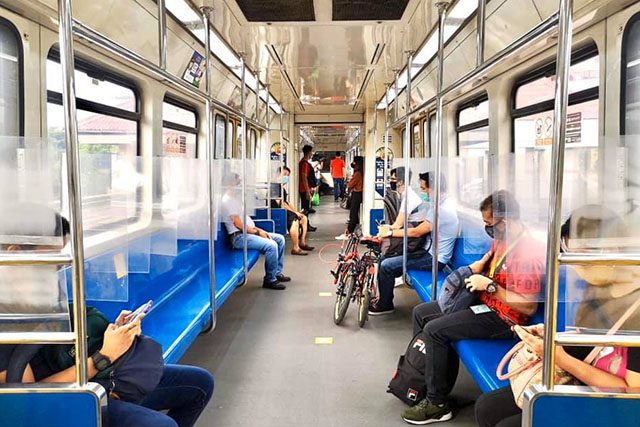
The management of Light Rail Transit-Line 1 reminded its passengers on the proper wearing of face mask as the metro sees a surge in COVID-19 cases.
Light Rail Manila Corporation (LRMC) released an infographic on social media which featured different ways on how commuters wrongly wear their face mask and urged them to “be responsible” individuals.
“May kilala ka bang ganito? Let us continue to BE RESPONSIBLE for each other’s health and safety. Together, we can #RideSafeOnLRT1,” it said on Wednesday.
LRMC featured some examples of a wrong mask usage which consists of the following:
- Wearing it above the head (“the headband”)
- Wearing it through one ear only (“the earring”)
- Placing it below the mouth or in the chin area (“the chin cover”)
- Wearing it right below the nose (“the lowrider”)
“Wear your face mask and face shield the right way! Your mask needs to cover your mouth and nose to keep you and others safe,” the management said.
LRT-1 also said its passengers are not allowed to talk inside the trains to mitigate the spread of the virus, which can be transmitted through respiratory droplets and through aerosol containing viral particles, especially in enclosed areas.
Its transit system mainly traverses along Rizal Avenue, Rizal Avenue Extension and Taft Avenue. Its route starts from Roosevelt in Quezon City to Baclaran in Pasay City, which are within the metro.
Case surge
Recently, experts have warned that the National Capital Region is seeing an uptick in COVID-19 cases. Based on the daily tallies, the metro recorded a 42% increase.
Its reproduction rate, which refers to the number of individuals that a COVID-19 positive can infect, also increased as well.
Experts added that all NCR cities had an upward trend in new cases, particularly a “very sharp two-week” increase of more than 40% in Quezon City, Makati, Taguig, as well as in Parañaque, Caloocan and Mandaluyong.
Four cities also remain as high-risk areas, namely: Pasay with a daily attack rate of 30% per 100,000, Makati, Malabon and Navotas.









